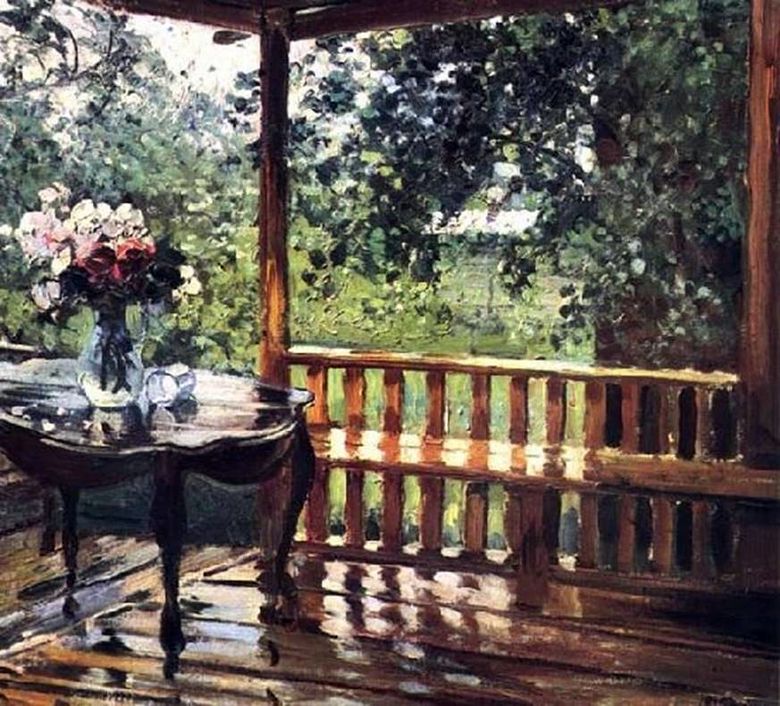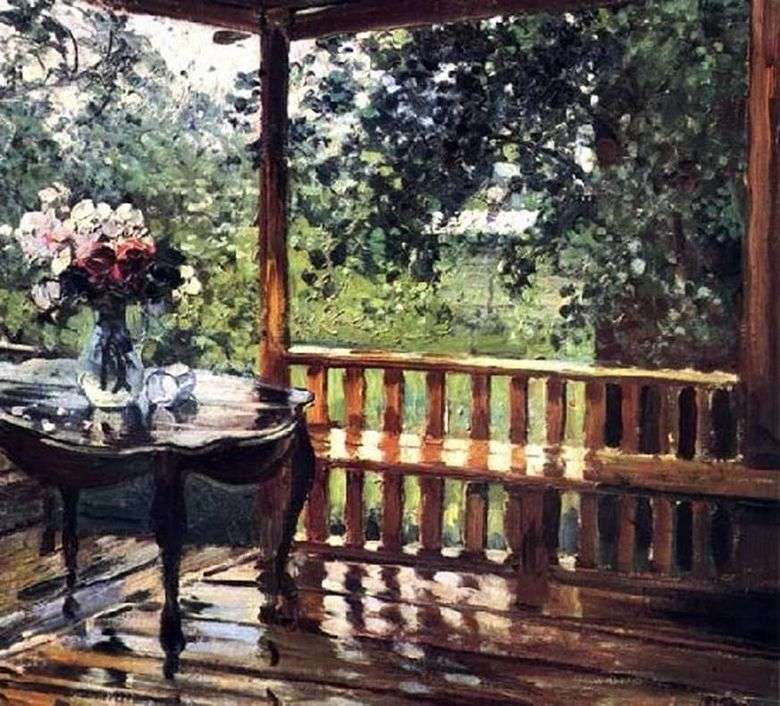
By 1935, having written many portraits of Lenin, Stalin and other Soviet leaders, AM Gerasimov was promoted to the greatest masters of socialist realism. Tired of the struggle for official recognition and success, he left to rest in his native and beloved city of Kozlov. Here, the “Wet Terrace” was created.
The painting arose with lightning speed – it was written for three hours. At the same time, the picture that emerged spontaneously is not accidental. A picturesque motif of a rain-refreshed nature attracted the artist even in the years of teaching in the School of Painting. He managed to get wet objects, roofs, roads, grass. Alexander Gerasimov, perhaps, without guessing himself, went to this picture for many years and implicitly wanted to see first hand what we see now on the canvas.
Otherwise, he could simply not pay attention to the rain-drenched terrace. In the picture there is no exaggeration, there are no re-written pieces and a contrived plot. It is really written in one breath, as fresh as the breathing of green foliage, washed by rain. The image bribes with spontaneity, it shows the lightness of the artist’s feelings. The artistic effect of the picture was largely predetermined by the high pictorial technique, built on reflexes. “The lush green glow of the garden greens on the terrace, pinkish and blue on the wet surface of the table, the shadows are colorful, even multicolored, with silver reflections on the water-covered boards.
The artist used the glaze, applying new layers of paint over the dried layer – translucent and transparent, like lacquer. On the contrary, some details, for example garden flowers, are written pasty, emphasized by textured strokes. A major, uplifted note introduces a counter-print into the picture, the reception of illumination from behind, at close range, the crowns of trees somewhat reminding flickering stained-glass windows. “In Russian painting of the Soviet period there are few works where the state of nature would be so expressively conveyed. the best picture of AM Gerasimov. The artist lived a long life, wrote many paintings on different subjects, for which he received many awards and prizes, but at the end of the journey, looking back on what he had gone through, he considered this work to be the most significant.
 IV Stalin and Voroshilov in the Kremlin by Alexander Gerasimov
IV Stalin and Voroshilov in the Kremlin by Alexander Gerasimov Noon. Warm rain by Alexander Gerasimov
Noon. Warm rain by Alexander Gerasimov Après la pluie (Wet Terrace) – Alexander Gerasimov
Après la pluie (Wet Terrace) – Alexander Gerasimov Portrait of the oldest Soviet artists I. Pavlov, V. Baksheev, V. Byalynitsky-Biruli and V. Meshkov by Alexander Gerasimov
Portrait of the oldest Soviet artists I. Pavlov, V. Baksheev, V. Byalynitsky-Biruli and V. Meshkov by Alexander Gerasimov Gifts of Autumn by Alexander Gerasimov
Gifts of Autumn by Alexander Gerasimov Aya-Sofia by Alexander Gerasimov
Aya-Sofia by Alexander Gerasimov Still life. Wildflowers by Alexander Gerasimov
Still life. Wildflowers by Alexander Gerasimov Después de la lluvia (terraza mojada) – Alexander Gerasimov
Después de la lluvia (terraza mojada) – Alexander Gerasimov